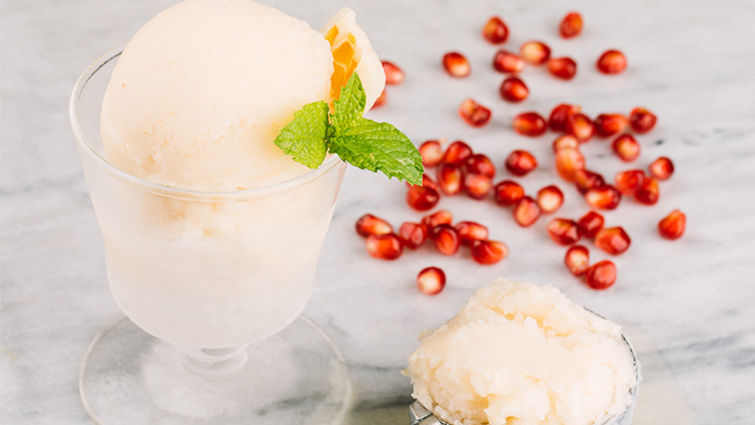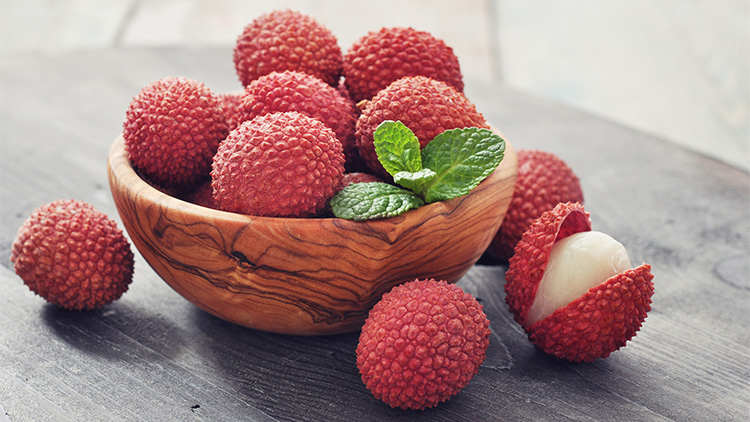One of the most unique and flavorful fruits of the tropics turned into ice-cream? Yes please! 1000 times healthier than store bought and so much more fun.

Recipe: Lychee Coconut Ice-cream
- 2 20-oz Cans lychee, including syrup (yields 3 cups drained fruit and 2 1/2 cups liquid)
- 1/2 cup - Coconut milk, full fat
- Juice of 1/2 – 1 lime
Directions
Puree the drained fruit until smooth and set aside. We recommend using a blender instead of a food processor for a creamier texture. In a medium sauce pan, heat the lychee syrup over medium heat and allow to cook for a few minutes until reduced by 1/4 cup. Add the coconut milk, and reduced syrup to the pureed fruit. Chill in the freezer for about a half hour. Add the fresh lime juice and stir. Process in your ice cream maker according to manufacturer’s directions.

Star Ingredient:
Lychee Contain:
Vitamin C*
Did you know the human body does not have the ability to produce vitamin C on its own? That’s why it’s so important to make sure we are eating a wide variety of foods with Vitamin C. This vital vitamin is not only useful to help our bodies fight off the common cold, but it’s necessary for the absorption of iron and very important for our connective tissues. Connective tissues are what keep our skin firm and our muscles strong. Because vitamin C supports our connective tissues, it is also useful in speeding up the healing process. If you have a wound, you might want to consider increasing the intake of foods higher in vitamin C.
Trivia: Cats and dogs can make vitamin C therefore they don’t need fruits and vegetables.
Vitamin B6*
All B vitamins play many specific roles in helping the enzymes to perform thousands of different molecular conversions in the body.
Vitamin B6 has been known to play roles in protein and amino acid metabolism. Besides a weakening immune response, vitamin B6 deficiency is expressed in general symptoms, such as weakness, irritability and insomnia. Other symptoms include a greasy, flaky dermatitis, anemia, and in advanced cases, convulsions. The richest food sources of vitamin B6 are protein-rich meat, fish and poultry. Potatoes, a few other vegetables, and some fruits are good sources, too. Foods lose vitamin B6 when heated.
Copper*
Although we may only need small amounts of this trace mineral, copper is very important to our overall health. The primary function of copper in the body is to serve as a constituent of enzymes with catalyze the formation of hemoglobin, help manufacture the protein collagen, assist in the healing of wounds and help maintain the sheath around nerve fibers. One of copper’s most vital roles is to help cells use iron. Like iron, copper is needed in many reactions related to respiration and energy release. The best food sources include legumes, whole grains, seafood, nuts, and seeds.
*These statements have not been evaluated by the Food and Drug Administration. This is not intended to diagnose, treat, cure, or prevent any disease.

